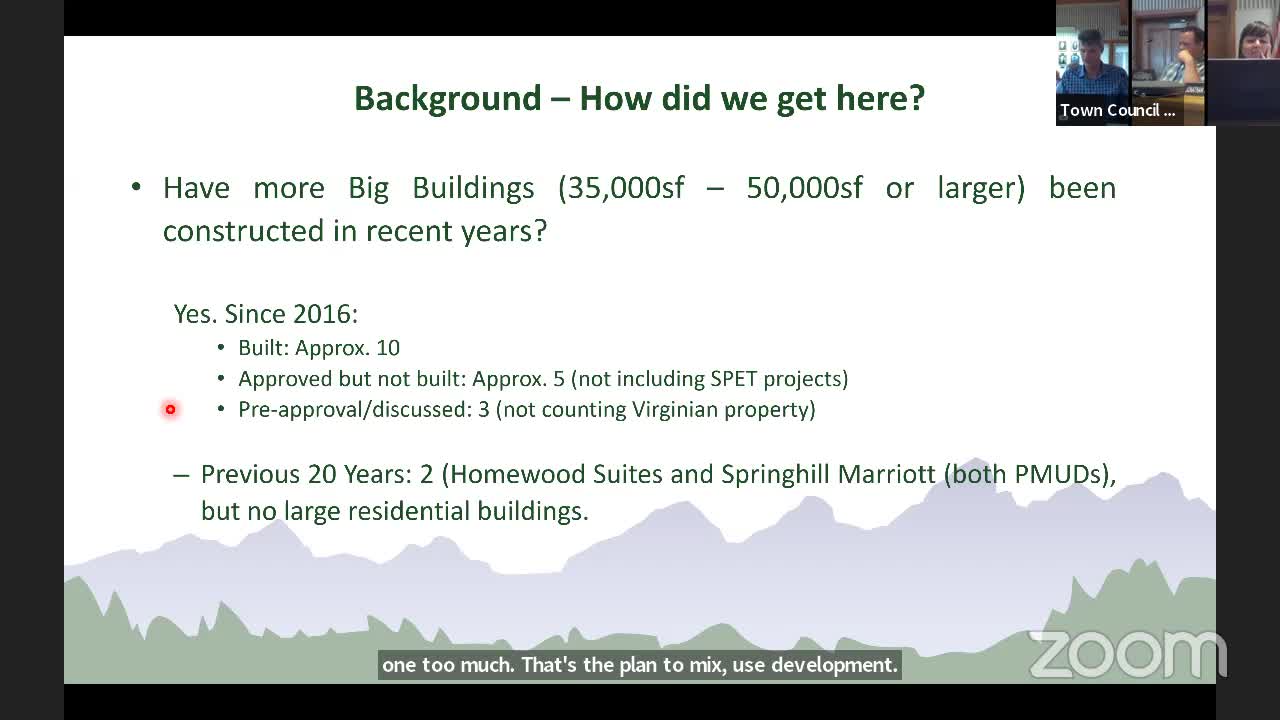City revamps zoning laws to boost workforce housing development
July 15, 2024 | Jackson Town Council, Jackson, Teton County, Wyoming

This article was created by AI summarizing key points discussed. AI makes mistakes, so for full details and context, please refer to the video of the full meeting. Please report any errors so we can fix them. Report an error »

In a recent government meeting, officials discussed significant changes to land development regulations (LDRs) that have facilitated the construction of larger mixed-use projects in the community. The conversation highlighted the evolution of these regulations since their last major update in 2012, which aimed to modernize the approach to urban development.
Key to this transformation was the shift from restrictive building size limits to a form-based code that prioritizes design and streetscape over sheer size. This philosophical change allows for greater flexibility in building dimensions while ensuring that new developments enhance the community's aesthetic and functional qualities. The meeting underscored the importance of design elements such as building facades, transparency, and streetscape standards, which are now integral to the approval process for new constructions.
Officials noted that the introduction of incentives for workforce housing in 2016 further encouraged higher density developments. By eliminating maximum building sizes and the previously required Planned Unit Development (PUD) tool for apartment construction, the regulations now support a more diverse range of housing options. The new \"2 for 1 workforce bonus\" was also mentioned as a strategy to incentivize the development of affordable housing units.
The discussions revealed a clear trend towards accommodating larger buildings and mixed-use developments, reflecting a growing recognition of the need for higher density in urban planning. This shift not only aims to meet the demands of the private sector but also addresses public sector needs for sustainable community growth. As the community continues to evolve, these regulatory changes are expected to play a crucial role in shaping its future landscape.
Key to this transformation was the shift from restrictive building size limits to a form-based code that prioritizes design and streetscape over sheer size. This philosophical change allows for greater flexibility in building dimensions while ensuring that new developments enhance the community's aesthetic and functional qualities. The meeting underscored the importance of design elements such as building facades, transparency, and streetscape standards, which are now integral to the approval process for new constructions.
Officials noted that the introduction of incentives for workforce housing in 2016 further encouraged higher density developments. By eliminating maximum building sizes and the previously required Planned Unit Development (PUD) tool for apartment construction, the regulations now support a more diverse range of housing options. The new \"2 for 1 workforce bonus\" was also mentioned as a strategy to incentivize the development of affordable housing units.
The discussions revealed a clear trend towards accommodating larger buildings and mixed-use developments, reflecting a growing recognition of the need for higher density in urban planning. This shift not only aims to meet the demands of the private sector but also addresses public sector needs for sustainable community growth. As the community continues to evolve, these regulatory changes are expected to play a crucial role in shaping its future landscape.
View full meeting
This article is based on a recent meeting—watch the full video and explore the complete transcript for deeper insights into the discussion.
View full meeting